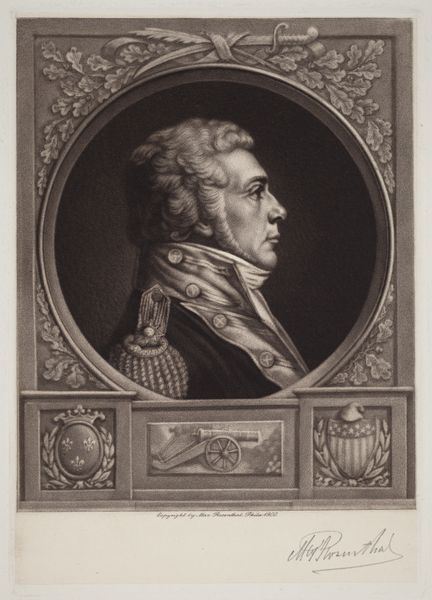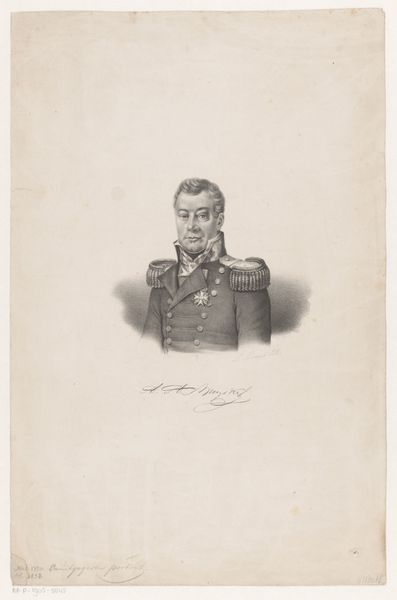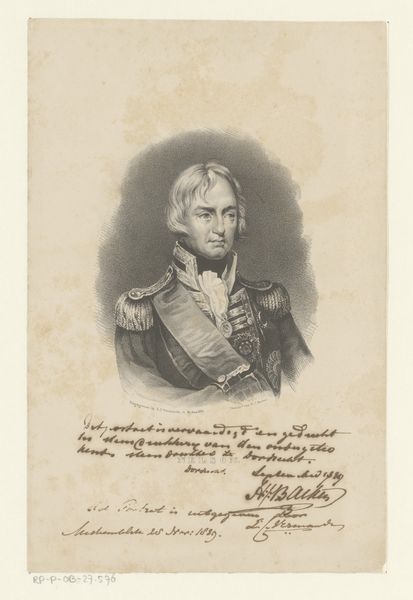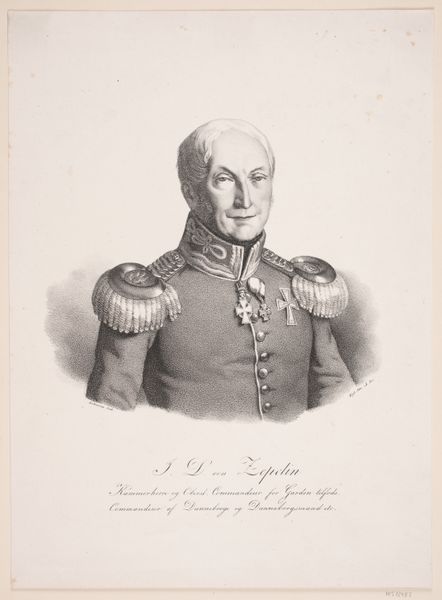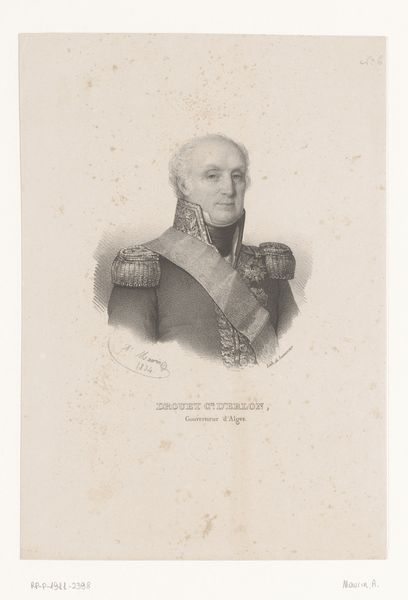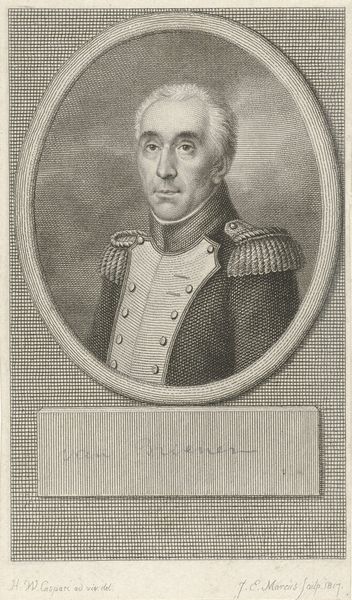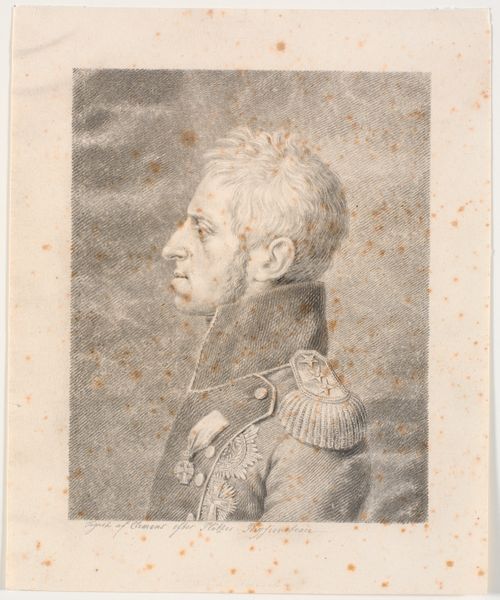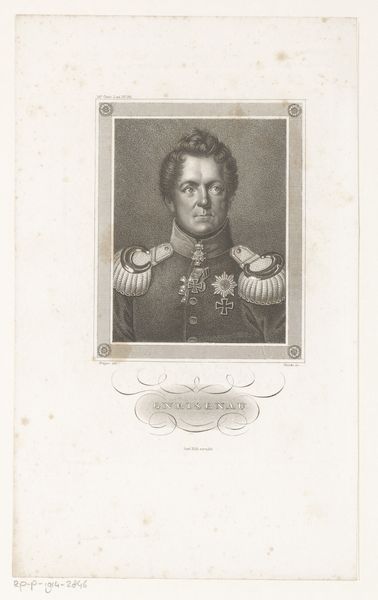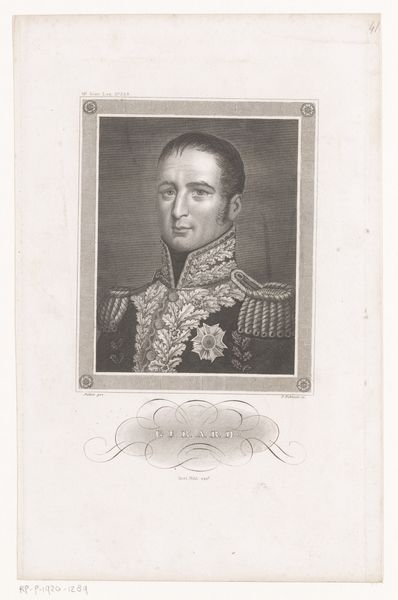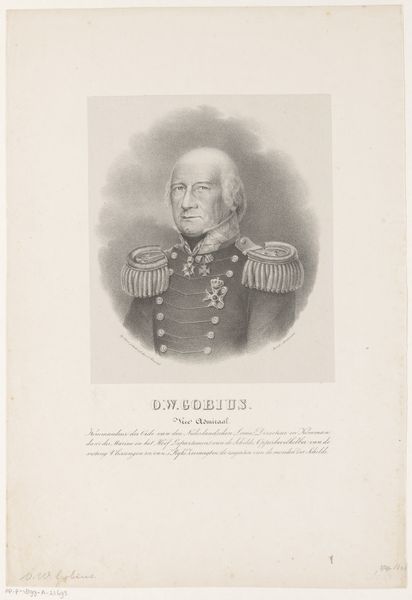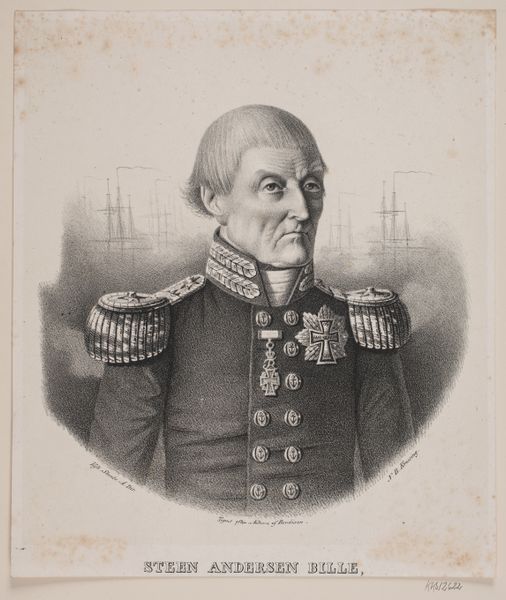
drawing, pencil
#
portrait
#
drawing
#
romanticism
#
pencil
#
profile
Dimensions: 21 5/16 x 15 in. (54.1 x 38.1 cm)
Copyright: Public Domain
Editor: This drawing, "Dyer Sharp Wynkoop," from 1800 by Charles Balthazar Julien Févret de Saint-Mémin, has a stoic feel. It's so detailed for just a pencil drawing! How should we interpret this work beyond just a historical portrait? Curator: I think we need to look at the broader context to truly engage with this portrait. Wynkoop, likely a man of power at the time, is presented in a very particular, almost stylized manner. Consider what choices Saint-Mémin made. Why profile? What does the detail in his uniform communicate? The artist positions Wynkoop in a very specific societal framework that speaks volumes about the ideals of masculinity and status in the early 19th century. Editor: So it’s about power and the performance of masculinity? I wouldn't have immediately seen that just by looking. Curator: Exactly. The carefully rendered details—the crisp lines of his uniform, the controlled expression—all construct a very specific image of authority. Think about how this image reinforces, or perhaps even challenges, the political and social structures of its time. How does the portrait speak to ideas of class and access? Saint-Mémin, by depicting Wynkoop in this way, participates in and perhaps even critiques the power structures of his era. Editor: It's interesting how the artistic choices contribute to reinforcing social narratives. Seeing art this way is eye-opening. Curator: It encourages us to look critically at not just the aesthetic value but the socio-political messages embedded in the art. What does art do, how and who does it serve? By asking these questions, we unearth a deeper understanding of our past. Editor: I agree. This approach highlights art's profound role in shaping perceptions and understanding power dynamics. Thank you.
Comments
No comments
Be the first to comment and join the conversation on the ultimate creative platform.
